ARDUINO MEGA 2560
Arduino mega 2560 Atmega2560-16au compatible with Arduino is a micro-controller board based on the ATmega2560 IC. It has a USB host interface for connecting to Android phones through the MAX3421e IC.
The MEGA ADK is equipped with versatile components, including 54 digital input/output pins (15 of which can also function as PWM outputs), 16 analog inputs, 4 UARTs (hardware serial ports), a 16 MHz crystal oscillator, a USB connection, a power jack, an ICSP header, and a reset button. This board is based on the Mega 2560 design and shares similar features with the Mega 2560 and Uno. Additionally, it has an ATmega8U2 programmed as a USB-to-serial converter. In its third revision, the Mega ADK includes a resistor that pulls the 8U2 HWB line to ground for easier access to DFU (Device Firmware Upgrade) mode.
New features on the board include:
As a result of the -1.0 pin-out, the SDA and SCL pins are near the AREF pin, and two additional pins are placed near the RESET pin, the IOREF, which allows the shields to adjust to the board’s voltage. AVR boards, which operate at 5V, and Arduino Due boards, which operate at 3.3V, will both be compatible with shields in the future. The second pin is unconnected, and is reserved for future purposes.
Circuits with a stronger RESET function.
An external power supply or USB connection can be used to power the arduino mega 2560 R3 Android Accessory Development Kit (ADK). Power is selected automatically. External (non-USB) power can come from either an AC-to-DC adapter (wall-wart) or battery. An adapter can be connected by plugging a 2.1mm center-positive plug into the board’s power socket.
-Leads from a battery can be inserted in the GND and Vin pin headers of the POWER connector. Since the Mega R3 Android Accessory Development Kit (ADK) is a USB host, the phone will attempt to draw power from it when charging. When the ADK is power over USB, 500mA is available for the phone and board.
Features and specifications:
Arduino Mega 2560:
Atmel is the programmer
Microcontroller ATmega2560.
There are 54 digital input/output terminals (14 of which have programmable PWM outputs).
There are 16 analog inputs.
There are four UARTs (hardware serial ports).
A crystal clock with a frequency of -16 MHz.
-Bootloader that allows sketches to be downloaded via USB without having to go through other writers.
The device can be powered via USB or via an external power supply (not supplied).
A heavy gold plate construction is used.
16 MHz clock speed.
The bootloader uses 8 KB of the 256 KB flash memory.
-Operating voltage: 6 ~ 12 volts.
Arduino mega 2560 cable:
Pluggable on the hot side.
-Compatible with PCs.
Strain relief and PVC overmolding ensure error-free data transmission for a lifetime.
An aluminum under-mold shield helps meet FCC requirements for KMI/RFI interference.
In addition, foil and braid shields comply with fully rated cable specifications, reducing EMI/FRI interference.
High-Performance Error-Free Transmission.
Case made of transparent acrylic:
ARDUINO MEGA 2560 R3 (unassembled) compatible.
It is possible to adjust the cover.
Transparent color.
Acrylic is the material used.
The power of
follows:
What follows is:
The Arduino board’s input voltage when it’s powered by an external source (rather than 5 volts from the USB connection or another regulated power source). If you are using the power jack to supply voltage, you can access it through this pin.
In this pin, a regulated 5V is output from the board’s regulator. The board can be powered by the DC power jack (7 – 12V), the USB connector (5V), or the VIN pin (7-12V). It is not recommended to supply voltage to your board via the 5V or 3.3V pins, as it bypasses the regulator and can damage it.
The onboard regulator generates a 3.3 volt supply with a maximum current draw of 50 milliamps.
The ground pin is GND.
This pin on the Arduino board serves as the voltage reference for the microcontroller. A properly configured shield can read the IOREF pin voltage and select the appropriate power source or enable voltage translators on the outputs for working with 5V or 3.3V.
The memory
In the arduino Mega 2560 R3 Android Accessory Development Kit (ADK), there is 256 KB of flash memory for storing code (of which 8 KB is used for the bootloader); 8 KB of SRAM, and 4 KB of EEPROM (which can be read and written).
The inputs and outputs
With pinMode(), digitalWrite(), and digitalRead() functions, the arduino Mega 2560 R3 Android Accessory Development Kit (ADK)’s 50 digital pins can be used as inputs and outputs. Each pin is powered by 5 volts and can provide or receive a maximum current of 40 milliamps. There is an internal pull-up resistor (20-50 kOhm) that is disconnected by default. Additionally, some pins have specialized functions:
It can receive (RX) and transmit (TX) TTL serial data. Pins 0 and 1 are also connected to the corresponding pins of the ATmega8U2 USB-to-TTL Serial chip.
The external interrupts are 2 (interrupt 0), 3 (interrupt 1), 18 (interrupt 5), 19 (interrupt 4), 20 (interrupt 3), and 21 (interrupt 21). The attachInterrupt() function can be used to trigger interrupts on low values, rising or falling edges, or changes in values.
The analogWrite() function provides 8-bit PWM output from 2 to 13 and 44 to 46.
There are four SPI pins on the ICSP header, which are physically compatible with the Uno, Duemilanove, and Diecimila: 50 (MISO), 51 (MOSI), 52 (SCK), 53 (SS).
MAX3421E is the USB host.
Maxim X3421E
It uses the SPI bus to communicate with Arduino. It uses the following pins:
Seven (RST), fifty (MISO), fifty-one (MOSI), and fifty-two (SCK).
Please do not use Digital pin 7 as an input or output because it is used for MAX3421E communication
PJ3 (GP_MAX), PJ6 (INT_MAX), PH7 (SS) are not broken out on headers.
A built-in LED is connected to digital pin 13. When the pin is HIGH, the LED is on, when it is LOW, it is off.
Wire library supports TWI communication using pins 20 (SDA) and 21 (SCL). These pins are not located in the same place as the TWI pins on the Duemilanove or Diecimila boards.
Inputs in the Mega R3 Android Accessory Development Kit (ADK) have a resolution of 10 bits each (i.e. 1024 different values). In default, they measure from ground to 5 volts, but you can adjust the upper end of their range by using the AREF pin and analogReference() function. There are a few other pins on the board as well:
A reference voltage for analog inputs. Use with analogReference.
Typically used to add a reset button to shields that block the board’s reset button. Bring this line LOW to reset the microcontroller.
The communication process
The Arduino Mega 2560 R3 Android Accessory Development Kit (ADK) offers various options for communicating with different devices. With the ATmega2560, there are four hardware UARTs available for TTL (5V) serial communication. Additionally, an ATmega8U2 on the board allows one of the UARTs to be used for USB communication and creates a virtual com port for software on the computer. While Windows machines may require a .inf file, OSX and Linux machines will automatically detect the board as a COM port. The Arduino software features a convenient serial monitor that enables straightforward exchange of textual data between the board and other devices.
The board’s RX and TX LEDs will blink to indicate data transmission through the ATmega8U2/16U2 chip and USB connection to the computer (note: not for serial communication on pins 0 and 1). Additionally, serial communication can be achieved on any of the MEGA ADK’s digital pins with the help of a Software-serial library. The ATmega2560 also supports TWI and SPI communication. To make use of the TWI bus, refer to the included Wire library in the Arduino software. For SPI communication, utilize the SPI library.
Any device that has a USB port can connect and interact with the Arduino MEGA 2560 ADK thanks to the USB host interface provided by the MAX3421E IC. You can use it to control Canon cameras, interact with keyboard, mouse, and game controllers such as the Wiimote and PS3 for example, as well as interact with many types of phones.
The programming language
The Mega R3 Android Accessory Development Kit (ADK) can be used with the Arduino software (download). For details, check out the reference and tutorials. The ATmega2560 on the MEGA ADK comes preburned with a boot-loader (the same on Mega 2560) that allows you to upload new code without using an external hardware programmer. In order to communicate with it, it uses the STK500v2 protocol (reference, C header files).
See these instructions for details on bypassing the bootloader and programming the microcontroller using Arduino ISP or similar. Source code for the ATmega8U2 firmware can be found in the Arduino repository. The ATmega8U2 is loaded with a DFU bootloader, which can be activated by:
Boards with Rev1:
Resetting the 8U2 requires connecting the solder jumper on the back of the board (near the map of Italy).
It is easier to put the 8U2/16U2 HWB line into DFU mode on Rev2 or later boards since a resistor pulls the line to ground. To load a new firmware, you can use Atmel’s FLIP software (Windows) or the DFU programmer (Mac OS X and Linux). For more information, see this user-contributed tutorial. If you use the ISP header and an external programmer, you can overwrite the DFU bootloader.
Reset (automatic) software
Instead of physically pressing the reset button, the Arduino MEGA ADK has the ability to be reset through a connected computer. This is achieved by connecting one of the hardware flow control lines (DTR) of the ATmega8U2 to the reset line of the ATmega2560 using a 100 nano-farad capacitor. By asserting this line (taking it low), the reset line briefly drops and resets the chip. The Arduino software utilizes this feature, allowing you to easily upload code by pressing a button in the environment.
This allows for a shorter timeout on the boot-loader, as the lowering of DTR can be easily synchronized with the beginning of the upload process. As a result, when the MEGA ADK is connected to a Mac OS X or Linux computer, it automatically resets and enters bootloader mode for a brief moment. During this time, if any data besides new code is sent to the board, it will be ignored as per its programming. However, it will intercept and process the first few bytes of data received after establishing a connection.
When a sketch on the board receives initial configuration or data upon startup, ensure that the corresponding software waits for a brief moment before transmitting this information. The MEGA ADK has a trace that can be deactivated to disable the auto-reset function. The two pads on either side of the trace can be soldered together to reactivate it. This is labeled as “RESET-EN”. Alternatively, you can potentially disable the auto-reset by connecting a 110-ohm resistor from 5V to the reset line; refer to this forum thread for further instructions.
Overcurrent protection for USB devices
Using the arduino Mega 2560 R3 Android Accessory Development Kit (ADK), you can protect your computer’s USB ports from shorts and overcurrents with a resettable polyfuse. In spite of the fact that most computers have their own internal protection, the fuse provides another layer of security. In the event that a short or overload occurs, the fuse will automatically shut down the USB connection.
Shield compatibility and physical characteristics
The Arduino mega 2560 R3 Android Accessory Development Kit (ADK) PCB has a maximum length of 4 inches and a width of 2.1 inches. The USB connector and power jack extend beyond the length measurement. The board can be attached to a surface or case using three screw holes. Keep in mind that the distance between digital pins 7 and 8 is 160 mil (0.16″), which is not an even multiple of the standard 100 mil spacing of the other pins. Additionally, the MEGA ADK is designed to be compatible with most shields made for the Uno, Diecimila, or Duemilanove boards.
All digital pins 0 to 13 (as well as the adjacent AREF and GND pins), the power header, and the ICSP header, are in the same location. Moreover, the main UART (serial port) is located on the same pins (0 and 1); and external interrupts 0 and 1 (pins 2 and 3 respectively). SPI is also available through the ICSP header on the MEGA ADK and Duemilanove / Diecimila.
It is important to note that I2C is not located on the same pins as DMA on the MEGA ADK (20 and 21);


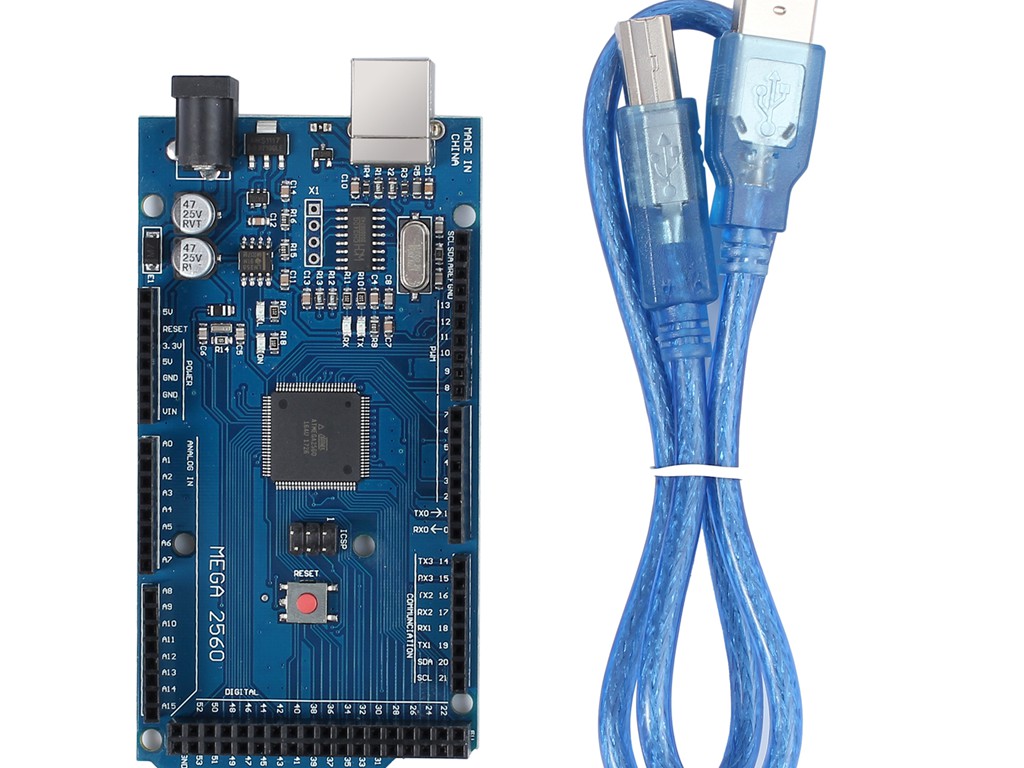
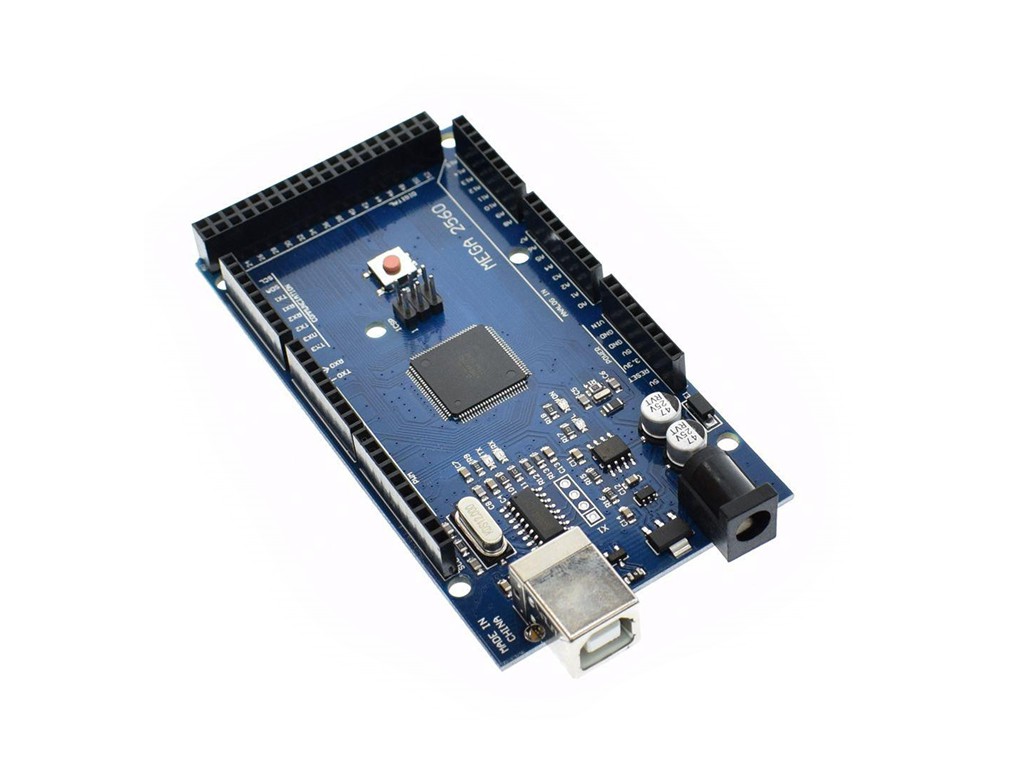
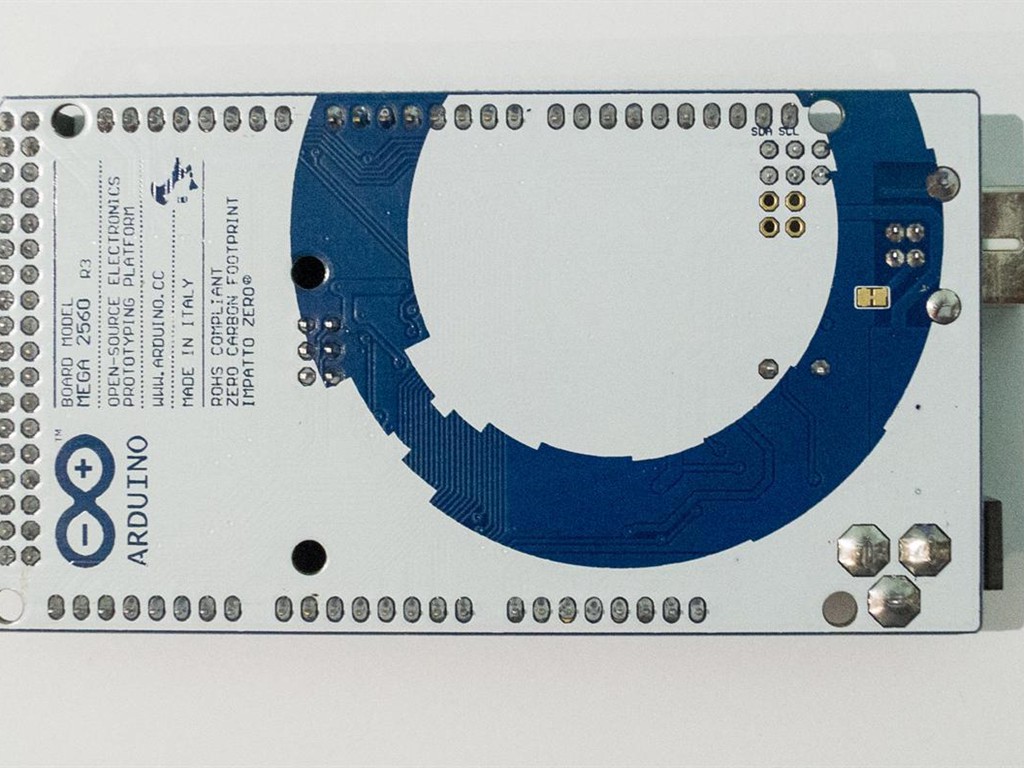


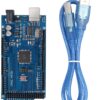



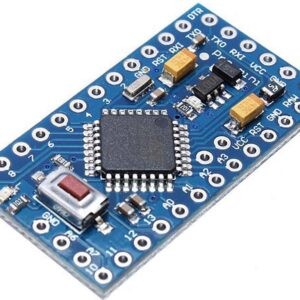



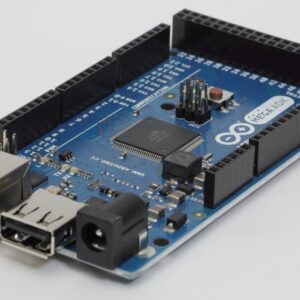
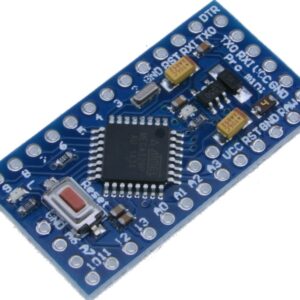
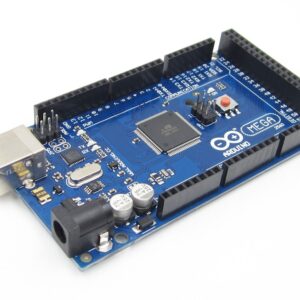



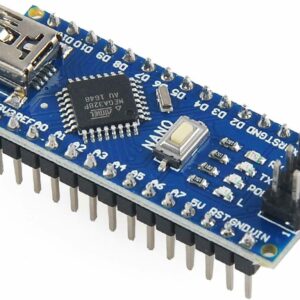
There are no reviews yet.